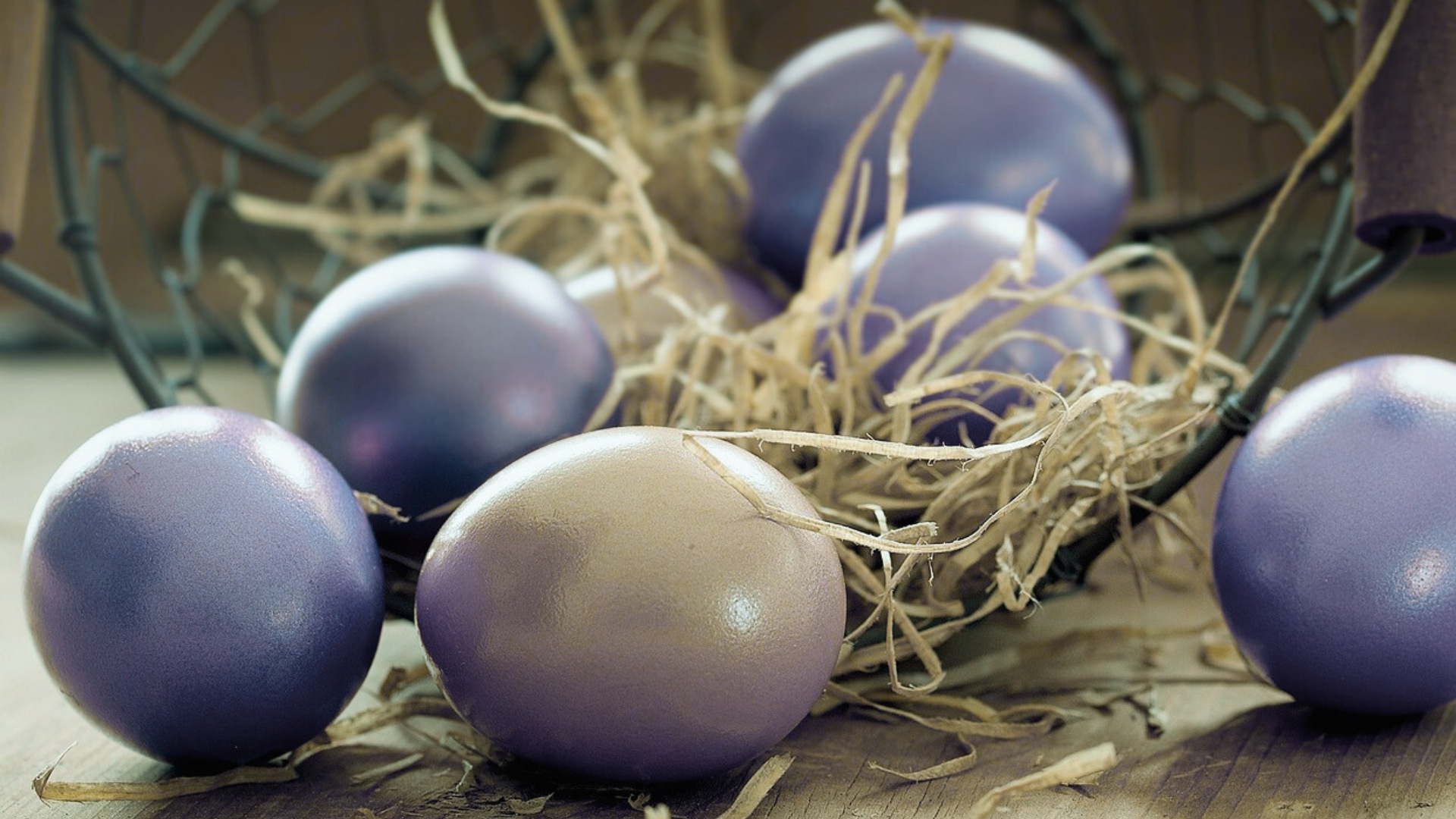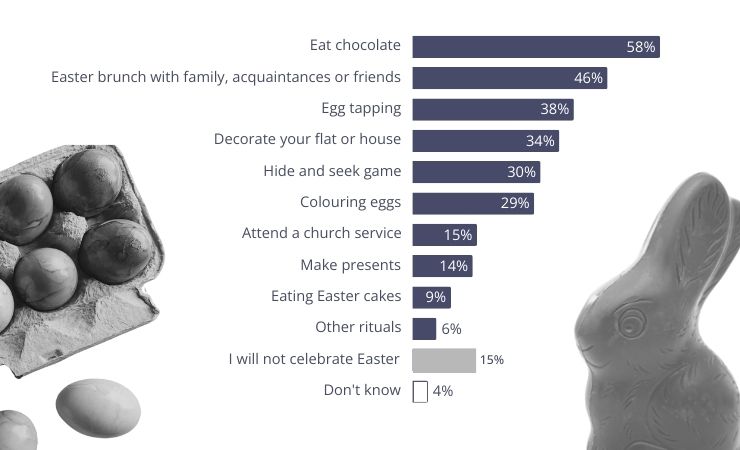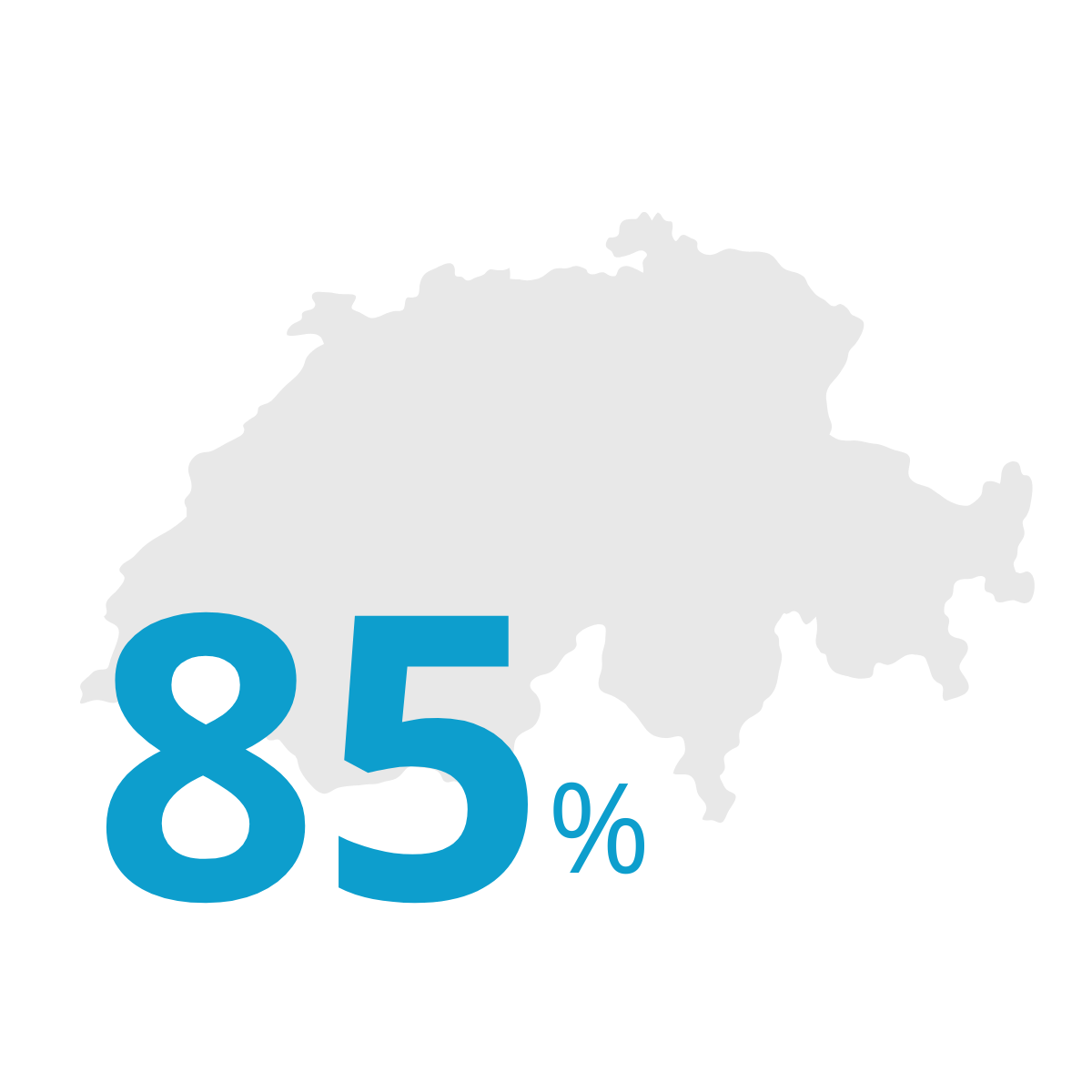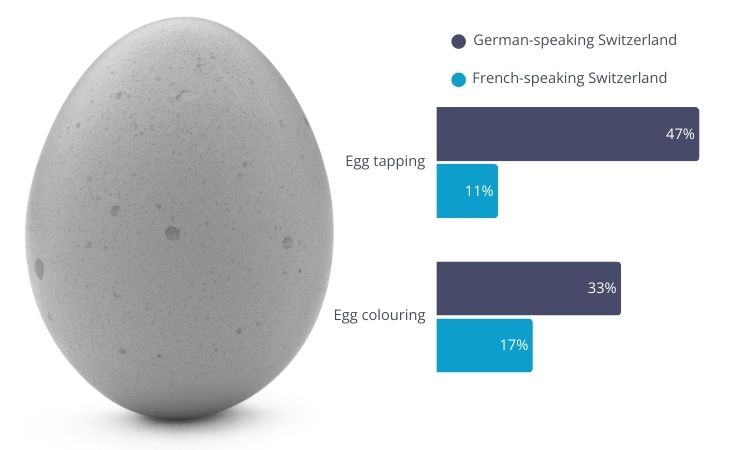Do you have a question?
Get in touch with me. Feel free to call me or send me an e-mail message. I look forward to the dialogue with you!

We love market research – and we are curious about what moves Switzerland. Even at Easter. That’s why we asked the Swiss population: 1,010 participants from our intervista online panel shared with us how they celebrate Easter. The answers? Some classic, some surprising – but always fascinating. We are happy to share our Easter Insights 2025 with you.
Data Collection Method: Survey conducted through the intervista online panel
Target Population: Swiss resident population aged 15 to 79 in German-speaking and French-speaking Switzerland
Sample Size: n = 1,010 interviews
Data Collection Period: March 14 to March 19, 2025


In Switzerland, around 85% of the population pays attention to Easter, whether through small traditional gestures or larger celebrations.
Particularly popular is the enjoyment of chocolate, which for many is simply part of the holiday, just like the Easter brunch with family and friends. Another cherished ritual is Eiertütschen (egg tapping), where young and old compete to see which egg is the strongest. Decorating the house or apartment and coloring eggs are also activities that many associate with the festive Easter period. Additionally, hiding and searching for Easter nests is a well-loved tradition.
The results show: Easter remains for many a festive, family-oriented event with rituals appreciated by people of all ages.
Looking more closely at the responses reveals fascinating differences across age groups, genders, and language regions.
A particularly noticeable difference appears when it comes to eggs: both coloring eggs and egg tapping are much more widespread in German-speaking Switzerland than in French-speaking Switzerland. While in German-speaking Switzerland, 33% of respondents use paint and brushes, in the Romandie, it’s only 17% – nearly half as many.
The difference is even more pronounced when it comes to egg tapping: in German-speaking Switzerland, this tradition is an integral part of Easter for 47% of respondents, whereas in French-speaking Switzerland, only 11% consider it a part of their Easter celebrations.


There are hardly any gender-specific differences in the rituals, except for one: decorating. 43% of women get their homes into the Easter spirit – while only 26% of men do the same. This confirms the stereotype.
A look at the different age groups reveals the most differences in how Easter is celebrated.
Eating chocolate is highly popular among younger people: both the 15- to 29-year-olds and the 30- to 44-year-olds are most likely to reach for a chocolate bunny, with 66% in each group. However, among the 60- to 79-year-olds, only 48% do so – for them, Easter seems to be a bit less sweet.
The Easter brunch is also especially popular among younger people: 54% of the 15- to 29-year-olds celebrate with a brunch, and 50% of the 30- to 44-year-olds do the same. As age increases, the enthusiasm for brunch noticeably decreases – in the older age groups, the proportion drops to 40%.
Another classic is hiding and searching for Easter nests. The 30- to 44-year-olds particularly embrace this ritual: 42% hide or search for eggs, compared to 33% of the 15- to 29-year-olds. In the oldest age group (60-79), however, this tradition is maintained by only 20%.

Whether it’s a classic Easter brunch, egg tapping, or simply a piece of chocolate – Easter is a fixed part of the annual calendar for many Swiss people. Our study shows: Traditions endure, but they change with age – and differ between regions.

Get in touch with me. Feel free to call me or send me an e-mail message. I look forward to the dialogue with you!